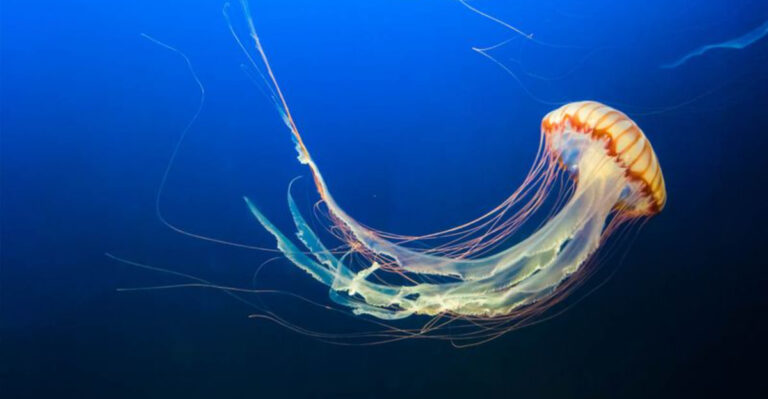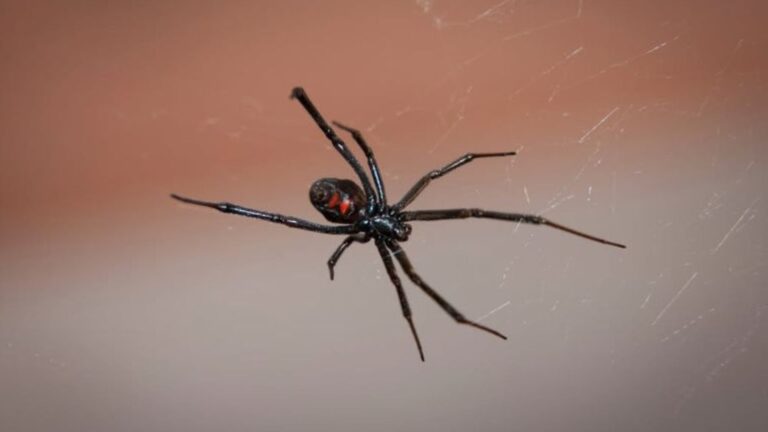15 Sea Monsters That Make Great Whites Look Small
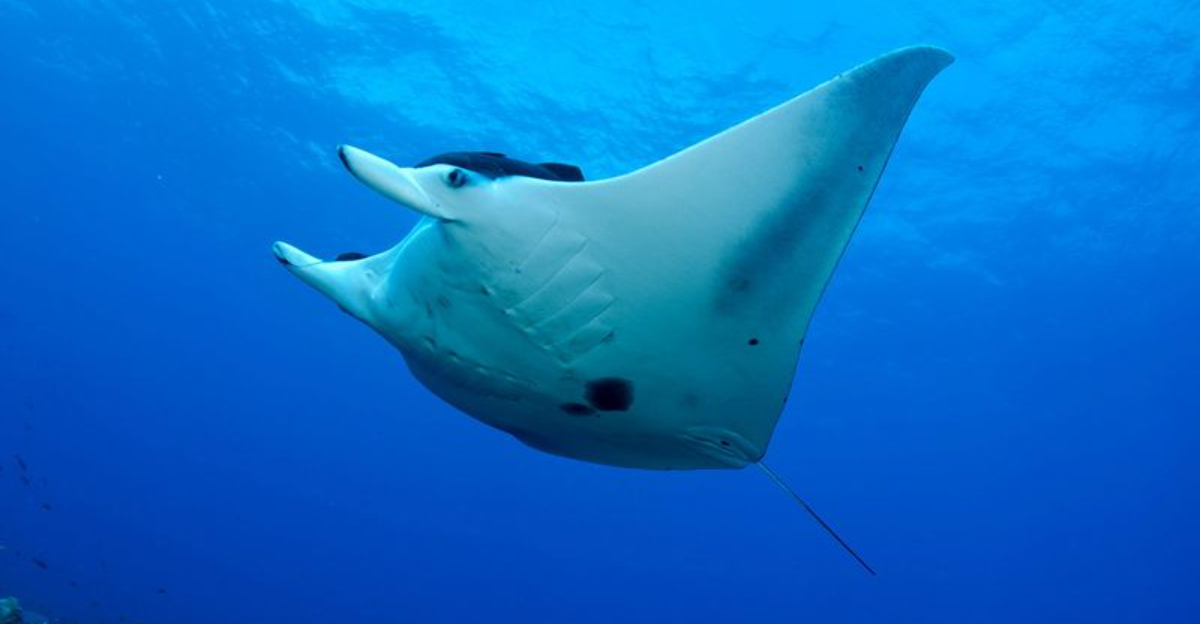
When we think of terrifying ocean predators, the great white shark often comes to mind. But lurking in the mysterious depths are creatures so massive they make these infamous sharks look like minnows in comparison.
From prehistoric survivors to deep-sea oddities, these ocean giants remind us just how little we know about what swims beneath the waves.
1. The Colossal Squid’s Nightmare Hooks
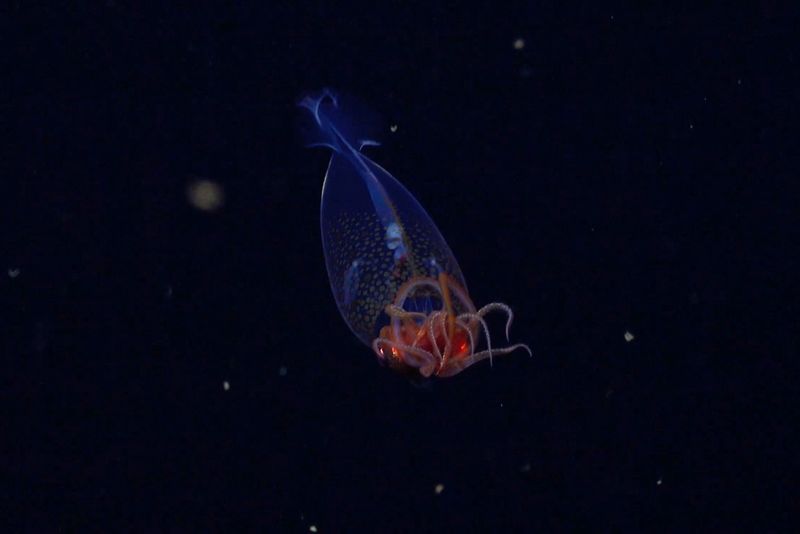
Imagine basketball-sized eyes staring at you from the darkness! The colossal squid boasts the largest eyes in the animal kingdom and wields tentacles armed with rotating hooks instead of simple suction cups.
These Antarctic monsters can reach weights of 1,100 pounds while hunting at depths of 7,000 feet. Scientists have found beaks of these creatures in sperm whale stomachs, suggesting epic battles in the deep.
2. The Ancient Megalodon’s Bone-Crushing Jaws

Gone but not forgotten, this prehistoric shark ruled the oceans with teeth the size of your hand. Though extinct for millions of years, if Megalodons swam today, they’d make great whites look like nervous puppies.
Growing up to 60 feet long with a bite force of 40,000 pounds, these monsters could crush a whale’s bones with one chomp. Their massive jaws could fit a small car inside!
3. The Blue Whale’s Heart-Stopping Size

Your heart could fit inside just one of this giant’s arteries! Blue whales aren’t monsters in temperament, but their sheer size is monstrous – they’re the largest animals to ever exist on Earth, period.
A child could swim through their major blood vessels, and their hearts weigh as much as a car. Despite weighing up to 200 tons, these gentle giants feast exclusively on tiny krill.
4. The Giant Squid’s Tentacle Terror
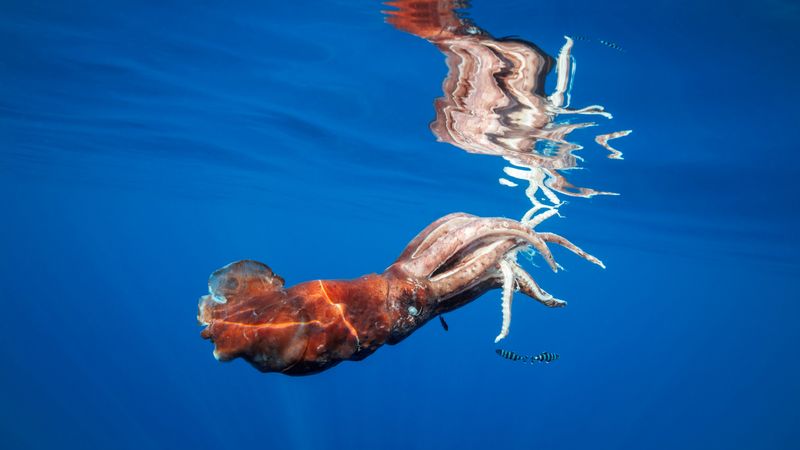
Sailors weren’t crazy when they spoke of sea monsters grabbing ships! Giant squids can stretch longer than a school bus, with tentacles powerful enough to wrestle with sperm whales.
These elusive creatures weren’t even photographed alive until 2004. Their donut-shaped brains wrap around their throats, and they have three hearts pumping blue blood through their massive bodies.
5. The Whale Shark’s Deceptive Gentleness
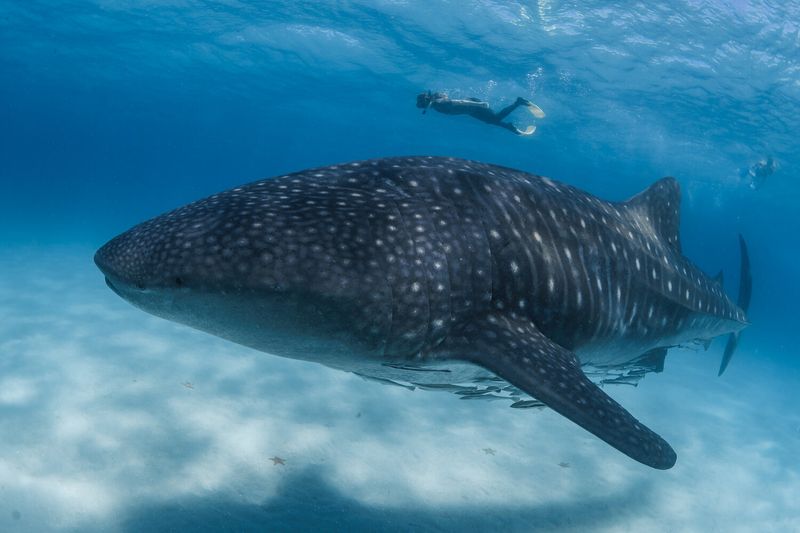
Spotted like a starry night, these swimming school buses can reach 40 feet long! Despite having “shark” in their name, whale sharks are peaceful filter-feeders that vacuum up plankton with mouths wide enough to fit a diver.
Their skin can be up to 4 inches thick, and they’re covered in a unique pattern of spots as individual as a human fingerprint. Some lucky divers even hitch rides by grabbing their dorsal fins!
6. The Portuguese Man O’ War’s Lethal Floating Trap
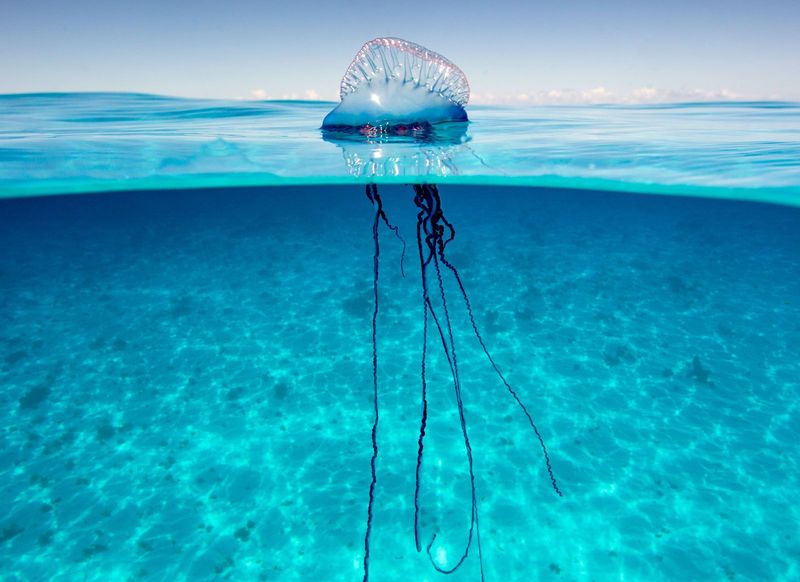
Looking like a beautiful blue balloon floating on the waves, this creature isn’t even a single animal! The Portuguese Man O’ War is actually a colony of specialized organisms working together as one fatal unit.
Its tentacles can stretch 100 feet below the surface, containing enough venom to kill fish and occasionally humans.
7. The Basking Shark’s Gaping Maw
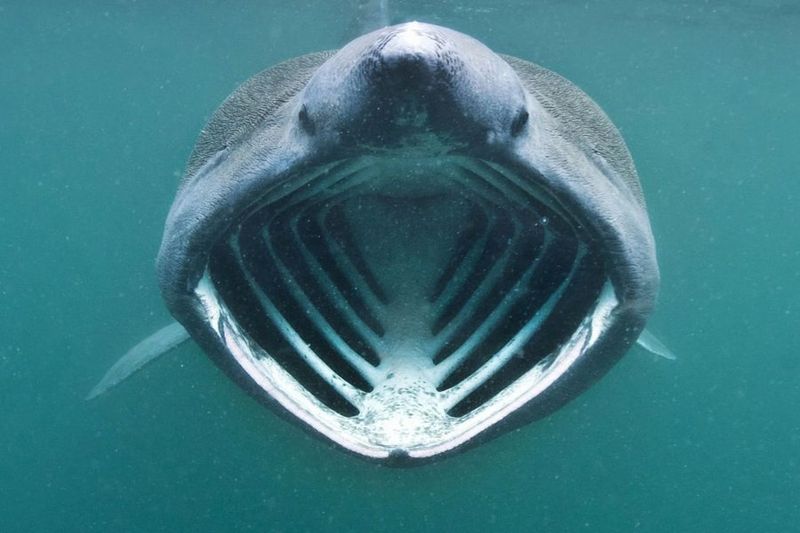
Swimming with its cavernous mouth wide open, the basking shark looks ready to swallow you whole! Second only to whale sharks in size, these giants can open their mouths over 3 feet wide as they cruise through the water.
Despite their terrifying appearance, they’re gentle plankton eaters. Their massive gills filter over 1,000 gallons of water per hour, extracting tiny food particles while they slowly patrol near the surface.
8. The Oarfish’s Serpentine Mystery
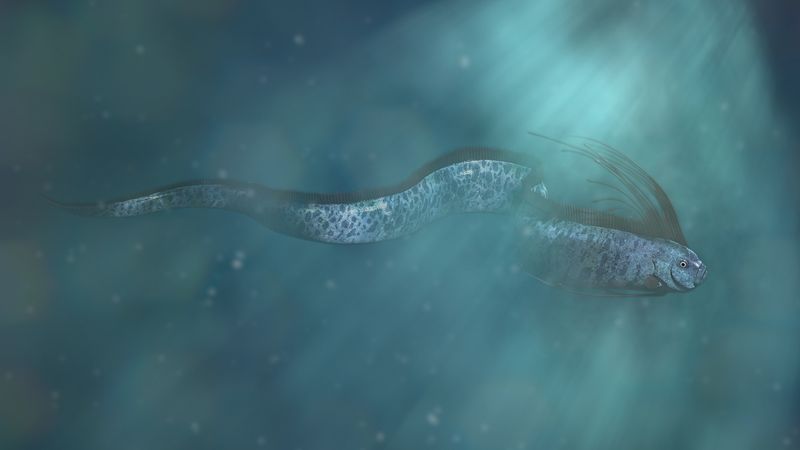
Legends of sea serpents likely began when sailors spotted these ribbon-like fish! Oarfish can grow up to 56 feet long and have bright red crests running along their heads, giving them an otherworldly appearance.
They typically live in the deep ocean’s twilight zone but occasionally wash ashore after storms. In Japan, they’re considered harbingers of earthquakes. Their bizarre vertical swimming style, with heads up and tails down, adds to their mysterious nature.
9. The Giant Manta Ray’s Winged Grace
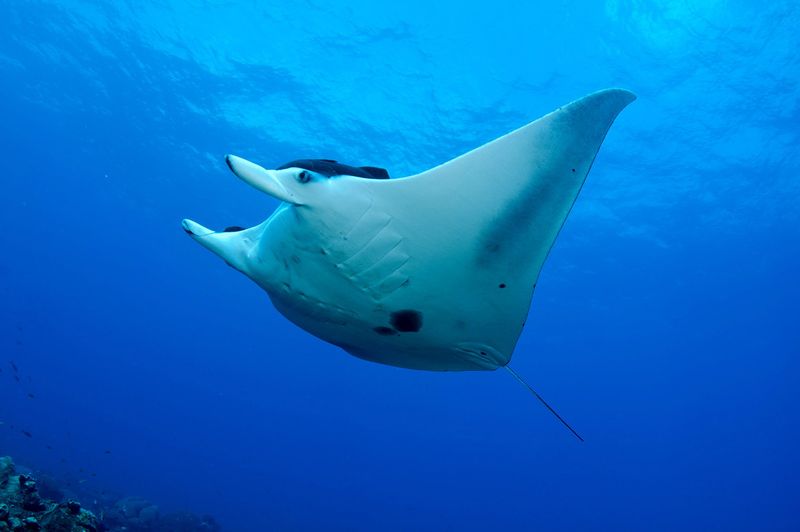
Flying through ocean currents like underwater birds, giant mantas have wingspans reaching 23 feet! These gentle giants have the largest brain-to-body ratio of any cold-blooded fish, suggesting surprising intelligence behind those curious eyes.
Unlike stingrays, mantas lack stinging barbs. They perform elaborate somersaults while feeding and can leap completely out of water, possibly to remove parasites or simply for play.
10. The Lion’s Mane Jellyfish’s Stinging Forest

Tentacles longer than a blue whale trail behind this ocean giant! The lion’s mane jellyfish sports a bell that can reach 8 feet wide, but it’s those tentacles – sometimes extending 120 feet – that make it truly monstrous.
These Arctic giants contain thousands of stinging cells that can pierce human skin like tiny harpoons. Their pulsating bells create a hypnotic display as they drift through cold northern waters, trailing their deadly tentacle forests behind them.
11. The Japanese Spider Crab’s Alien Reach
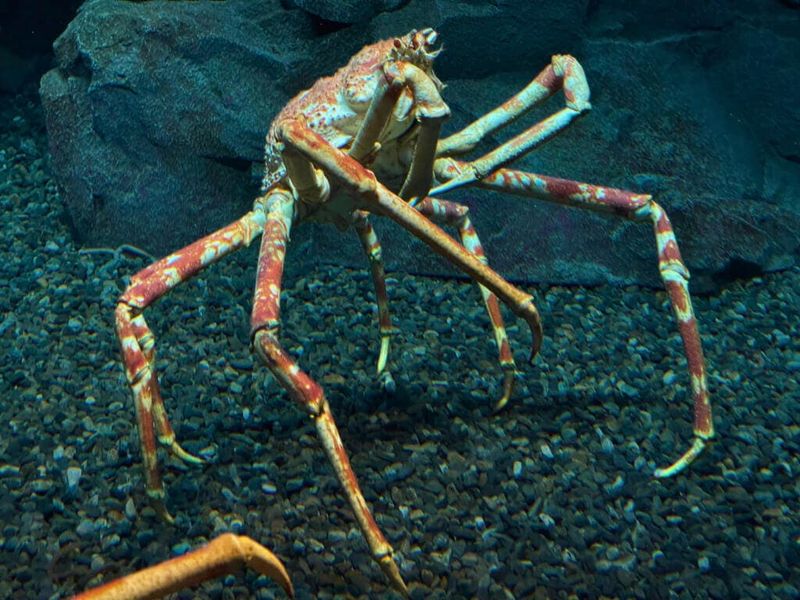
Scuttling across the ocean floor on legs spanning 12 feet, these crabs look like visitors from another planet! Japanese spider crabs can live for a century, growing continuously throughout their extraordinarily long lives. Their claws are powerful enough to snap fishing lines, yet they’re primarily gentle scavengers. Living at depths up to 2,000 feet, these ancient-looking creatures decorate their shells with sponges and anemones as natural camouflage against predators.
12. The Giant Pacific Octopus’s Problem-Solving Tentacles

Masters of disguise with brains to match, these eight-armed wonders can weigh 150 pounds! Giant Pacific octopuses can squeeze their boneless bodies through holes the size of quarters despite their massive size. They use tools, solve puzzles, and recognize human faces. With nine brains (one central plus one in each arm) and three hearts, these incredible creatures can change color and texture instantly to match their surroundings or express their moods.
13. The Greenland Shark’s Centuries-Old Eyes

Swimming the depths since Shakespeare’s time, these sharks can live over 500 years! Greenland sharks grow extremely slowly in frigid Arctic waters, not reaching maturity until around 150 years of age. Most have parasites dangling from their eyes, causing partial blindness.
Despite this handicap, they hunt seals and even reindeer that fall through ice. Scientists discovered one individual estimated to be 512 years old – possibly Earth’s oldest vertebrate.
14. The Mosasaurus’s Prehistoric Terror
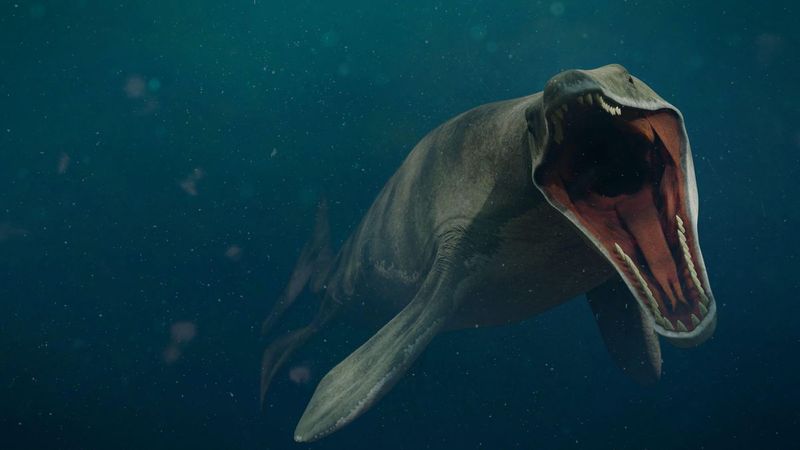
Before dinosaurs disappeared, these 50-foot marine lizards ruled the seas! Though extinct for 66 million years, mosasaurs were apex predators with double-hinged jaws that could swallow prey whole. Their paddle-like limbs propelled them through ancient oceans at surprising speeds.
Unlike today’s marine reptiles, mosasaurs gave birth to live young in open water. Their fossils show they had scales similar to modern snakes and forked tongues.
15. The Ocean Sunfish’s Floating Oddity
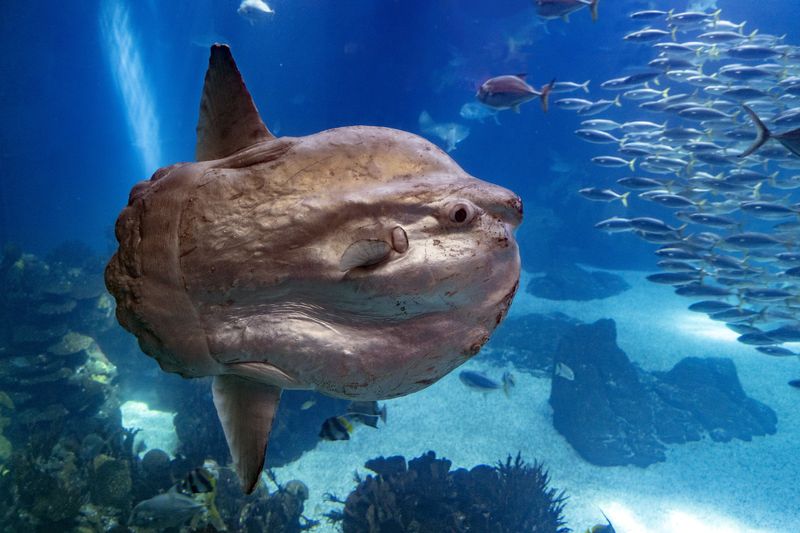
Resembling a swimming head without a body, these bizarre fish can weigh as much as a car! Ocean sunfish (Mola mola) are the heaviest bony fish alive, reaching weights of 5,000 pounds despite eating a diet of mainly jellyfish.
Their peculiar bodies lack tails, instead featuring a rudder-like appendage. Females produce more eggs than any other vertebrate – up to 300 million at once! They often float sideways at the surface, sunbathing to warm up after deep dives.



